
Art Gharana — 12 Mins read
Complete Guitar Strings Guide (Electric & Acoustic)
Musical Instruments
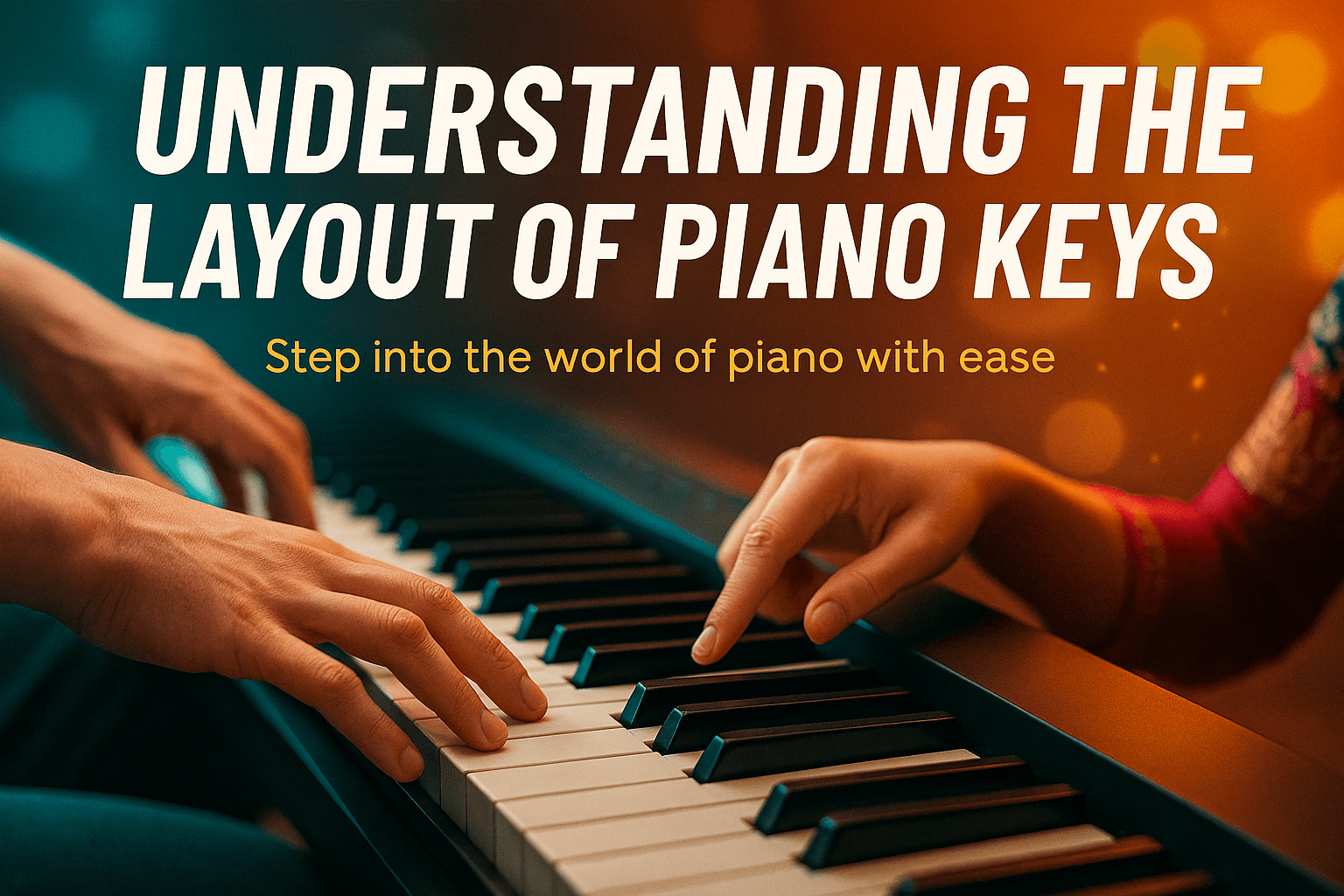 Have you ever looked at a piano and wondered what all those keys actually mean? Whether you're just starting out or revisiting your musical goals, understanding the layout of piano keys is the first step to unlocking the beauty of piano playing. The rows of black and white keys on a piano might seem complex at first—but once you grasp the pattern, you'll realize it's a logical and beautifully structured system.
Have you ever looked at a piano and wondered what all those keys actually mean? Whether you're just starting out or revisiting your musical goals, understanding the layout of piano keys is the first step to unlocking the beauty of piano playing. The rows of black and white keys on a piano might seem complex at first—but once you grasp the pattern, you'll realize it's a logical and beautifully structured system.
In this blog, we’ll walk you through the essentials—from how many keys are on a piano to what the labeled piano keys represent, and how notes are arranged across the keyboard. You’ll learn the difference between white and black keys, explore a clear piano keyboard layout, and even discover fun ways to start playing beginner-friendly tunes like “Happy Birthday” and “Twinkle Twinkle Little Star” using correct piano notes.
If you're someone searching for real piano keys insight or asking, “what are the keys on a piano?”, you’re in the right place. And if you're considering online piano lessons, we'll show you how knowing your way around the keyboard gives you a confident head start.
Let’s demystify the keyboard and get your fingers ready to play!
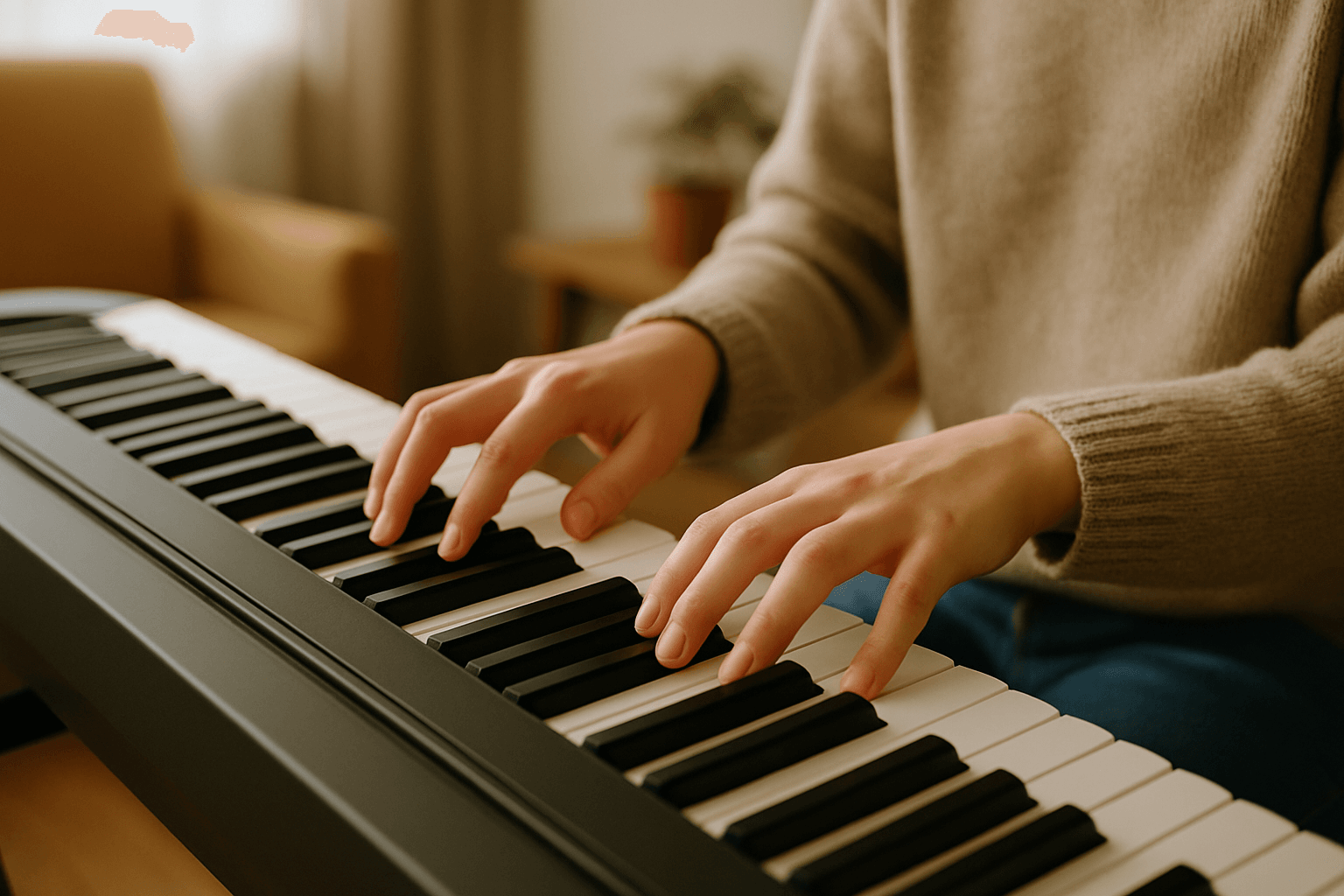 Have you ever sat in front of a piano and asked yourself, "How many keys are on a piano?" or "What do they all do?" You’re not alone. For beginners, the sheer number of piano keys and notes can seem overwhelming. But once you understand the basic structure, the keyboard becomes much less intimidating—and much more exciting to explore.
Have you ever sat in front of a piano and asked yourself, "How many keys are on a piano?" or "What do they all do?" You’re not alone. For beginners, the sheer number of piano keys and notes can seem overwhelming. But once you understand the basic structure, the keyboard becomes much less intimidating—and much more exciting to explore.
A full-sized piano typically has 88 keys, made up of 52 white keys and 36 black keys. These keys repeat in a pattern across the keyboard, forming the foundation of all piano music. Whether you're looking at an acoustic piano or a digital keyboard, this layout is fairly consistent, allowing you to transfer your skills between instruments.
The keys on a piano are divided into:
Understanding this simple layout helps you navigate the keyboard with confidence.
While professional pianos feature all 88 keys, many beginner keyboards come with 61 or 76 keys, which is more than enough to start learning the basics. These compact versions include all the essential music keyboard keys needed for early lessons and practice.
Here’s a quick comparison:
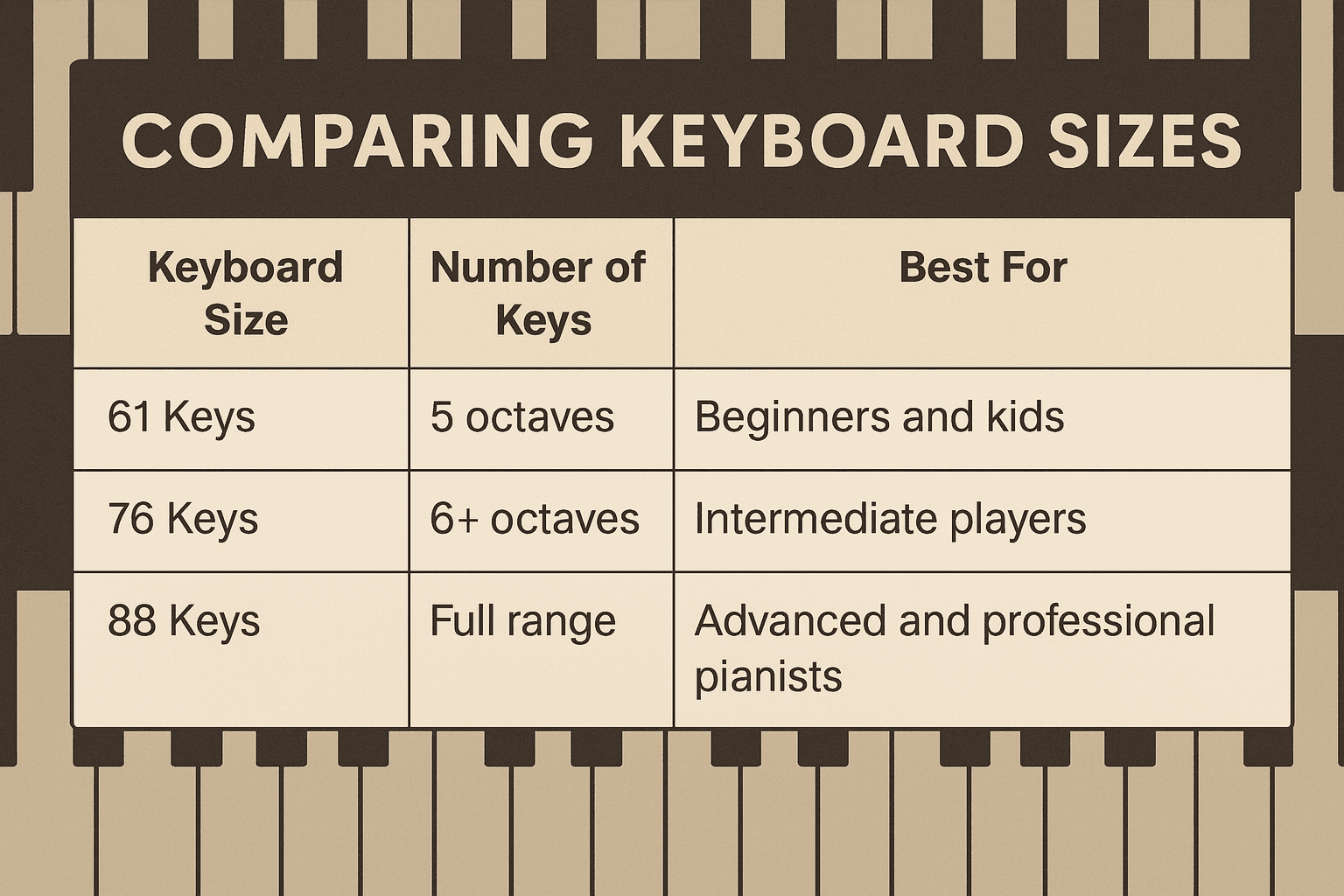 So, don’t feel pressured to start with a full-size piano. Focus on learning the layout, not the size of the instrument.
So, don’t feel pressured to start with a full-size piano. Focus on learning the layout, not the size of the instrument.
The alternating pattern of black and white keys is more than just visual—it’s a functional design that makes it easier to identify notes on the piano. The black keys are grouped in sets of twos and threes, which act as visual landmarks. This design helps you locate notes like C and F quickly—especially when you're just starting out.
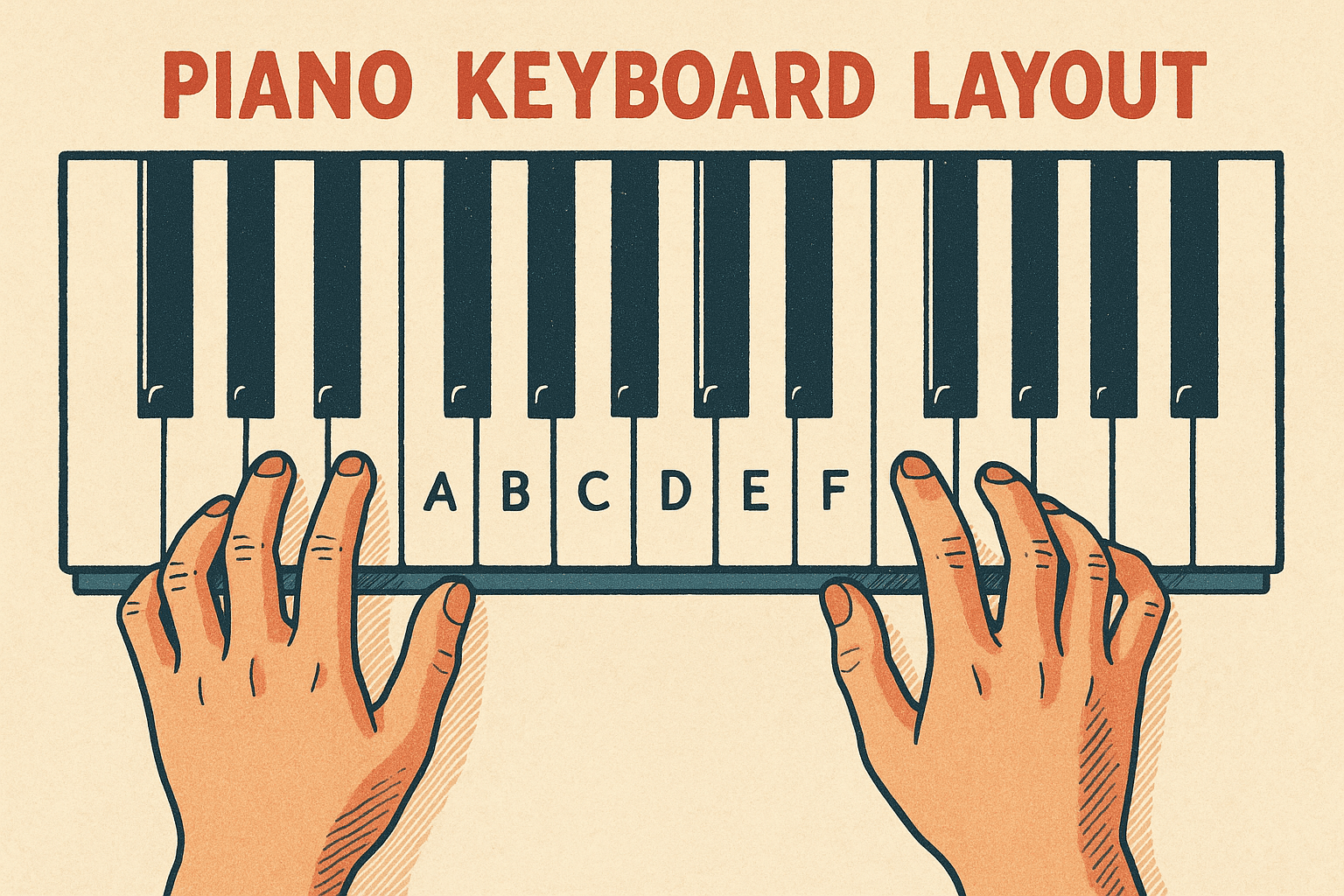 Ever feel lost staring at a piano keyboard, wondering where to even begin? You're not alone. The good news is, the piano keyboard layout follows a predictable pattern—and once you recognize it, everything becomes easier. Whether you're a complete beginner or someone returning to music after a break, understanding the layout is the key (pun intended!) to playing with confidence.
Ever feel lost staring at a piano keyboard, wondering where to even begin? You're not alone. The good news is, the piano keyboard layout follows a predictable pattern—and once you recognize it, everything becomes easier. Whether you're a complete beginner or someone returning to music after a break, understanding the layout is the key (pun intended!) to playing with confidence.
Let’s break it down:
These groups repeat in a pattern across the keyboard. Once you can recognize these patterns, you’ll be able to identify piano keys and notes instantly, even without looking at a chart.
Imagine looking at the piano from above. You’ll see repeating sets of:
This pattern helps you quickly locate important starting points like Middle C, which is often the reference point in early piano lessons.
For beginners, labeled piano keys can be a fantastic tool. These stickers or digital overlays help you associate names of the keys on a piano with their physical position. While some teachers prefer you to learn without them, many students find that labels boost early confidence and speed up the learning process.
A few benefits of using labeled keys:
If you’re not ready to label your actual instrument, try using a piano keyboard notes chart. This visual aid gives you an instant reference for:
Print one out and keep it near your keyboard—it’s an essential resource for beginners.
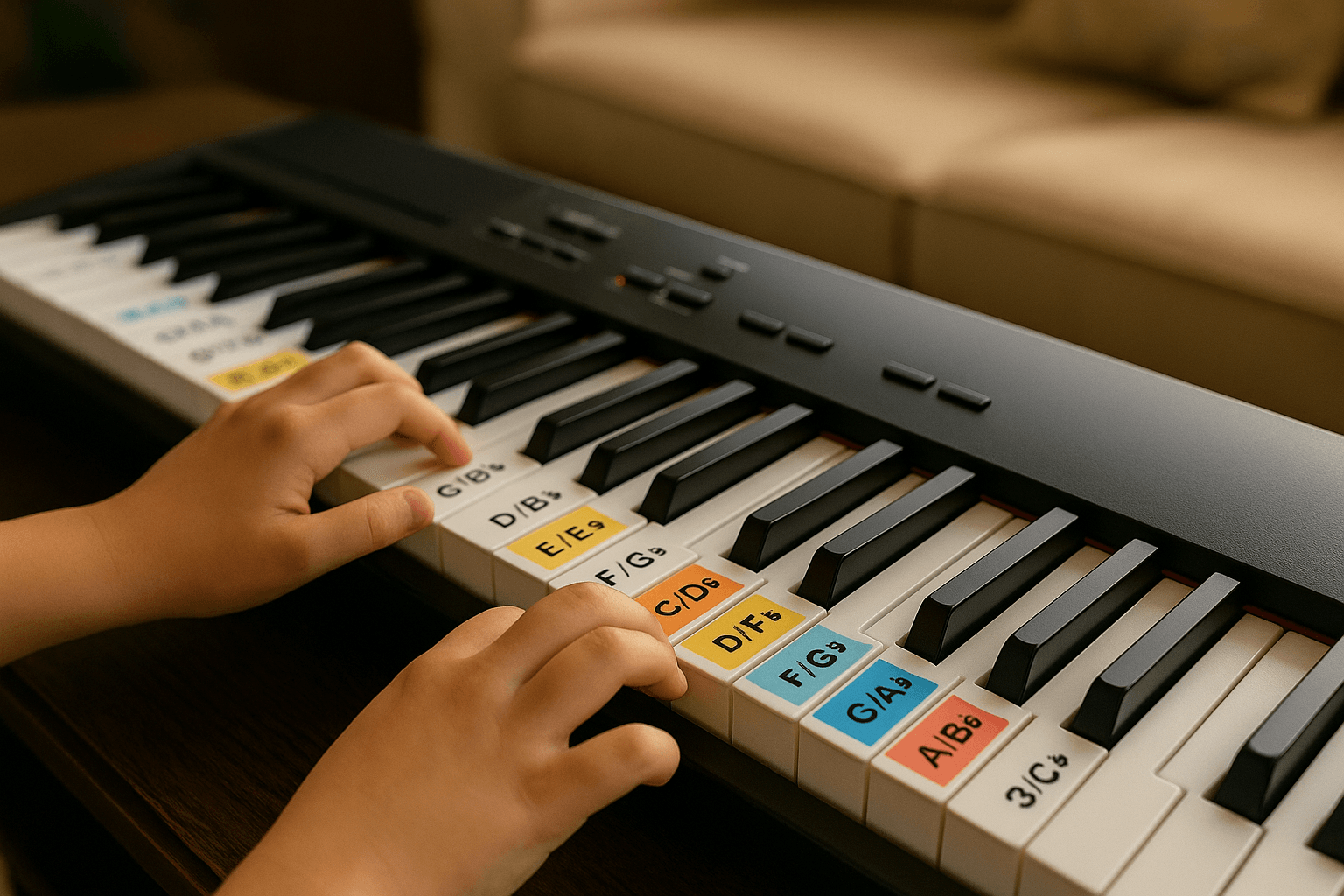 If you're learning piano, one of the first things you’ll hear is, “Learn the names of the keys!” But what does that really mean? How do you go from a jumble of black-and-white keys to confidently naming and playing each one? In this section, we’ll decode it together—step by step.
If you're learning piano, one of the first things you’ll hear is, “Learn the names of the keys!” But what does that really mean? How do you go from a jumble of black-and-white keys to confidently naming and playing each one? In this section, we’ll decode it together—step by step.
The names of the keys on a piano are based on the musical alphabet, which consists of just seven letters: A through G. After G, the pattern starts again at A. This repeating cycle spans the entire keyboard across multiple octaves.
Here’s how the white keys are named:
So, when someone says “name the piano keys,” they’re referring to identifying these lettered notes correctly across the board.
The black keys are sharps (♯) and flats (♭). Each one is named based on the white key it’s next to. For example:
Depending on the musical context, the same black key might be called something different, but it’s still the same physical key on your instrument.
This leads to an essential point: Every black key has two names. Don't let that confuse you—it’s all part of learning music theory and will become second nature with practice.
Here are a few tips to lock in your knowledge of piano key names:
When you know the names of the piano keys, you unlock your ability to:
It also makes it much easier to explore online lessons. For example, in Art Gharana’s online piano course, lessons are structured in a way that reinforces note recognition through real songs and interactive tools.
Still unsure which key is what? Join a teacher-led session and clarify it in minutes. You can book a free trial class at Art Gharana and experience interactive learning that fits your schedule.
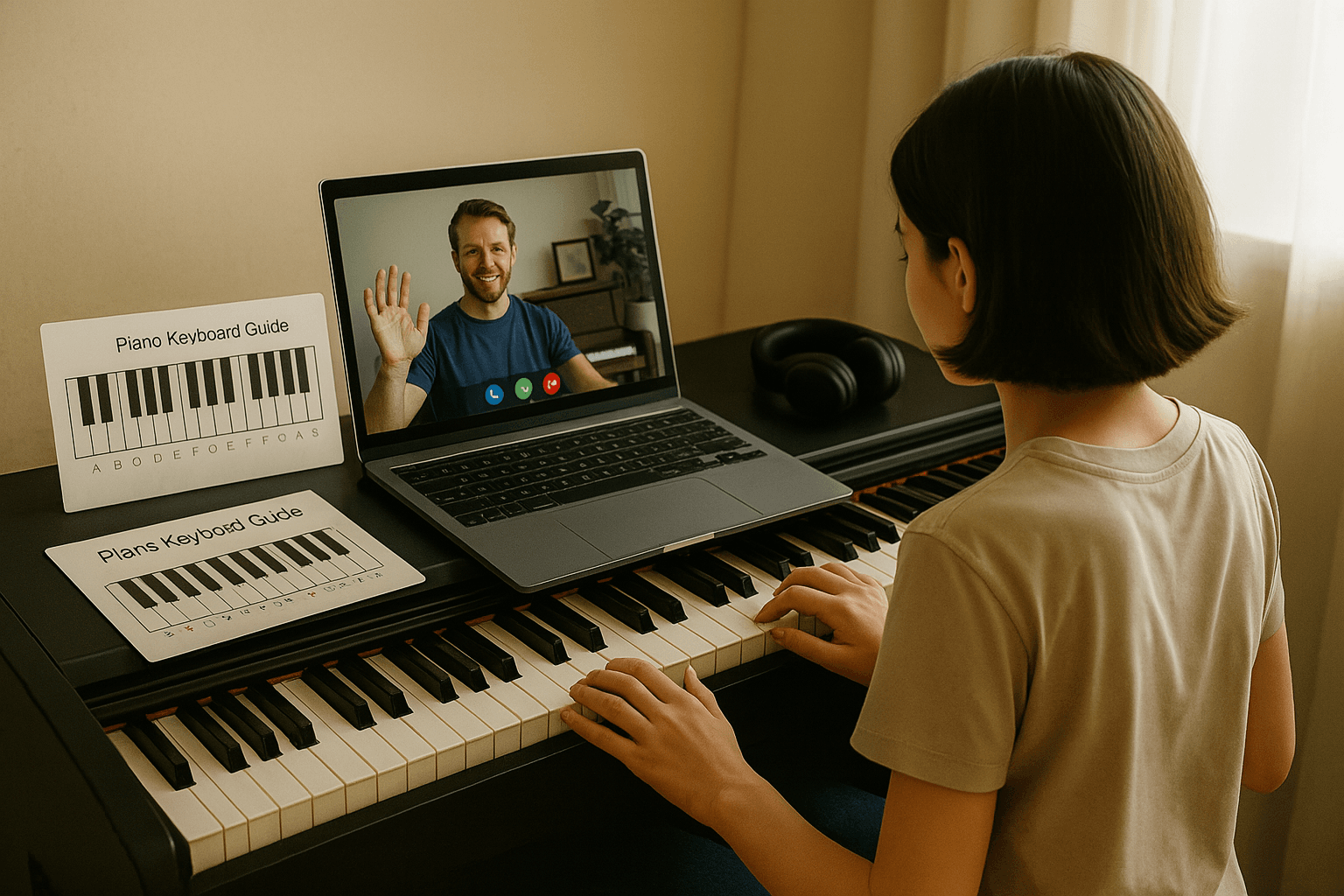 Thinking about learning piano but not sure where to begin? Or maybe you’ve always wanted to play but never found the time or right place to start? With the rise of digital learning, enrolling in an online piano course is one of the most flexible, effective, and engaging ways to begin your musical journey—no matter your age or skill level.
Thinking about learning piano but not sure where to begin? Or maybe you’ve always wanted to play but never found the time or right place to start? With the rise of digital learning, enrolling in an online piano course is one of the most flexible, effective, and engaging ways to begin your musical journey—no matter your age or skill level.
Let’s explore why learning piano online could be the best decision you make this year.
No need to commute or rearrange your schedule. Online piano lessons let you learn in your own space and at your own pace. Whether you have a full 88-key setup or a basic keyboard, you can start right where you are.
Worried about figuring it all out on your own? Don’t be. At Art Gharana, our online piano course is guided by experienced teachers who break down complex concepts into simple, engaging modules.
You'll receive:
Whether you're learning just for fun, for stress relief, or to pursue a long-term goal in music, online piano learning adapts to all piano key levels—from beginners to advanced.
Here’s who benefits most:
Unlike traditional classes that require long-term commitments, online platforms offer more affordable, flexible learning options. You can choose what works best for you—monthly, quarterly, or custom packages.
Plus, at Art Gharana, you can book a free trial class to see if the course is right for you before making any commitment.
Most online piano courses include interactive tools like:
These tools make learning dynamic and intuitive—even if you’ve never played a note before.
Learning piano online isn’t just a convenient alternative—it’s a powerful way to make music accessible, enjoyable, and personalized. And with the right support system, like Art Gharana’s expert-guided program, you can go from paino keys confusion to performance-ready in no time.
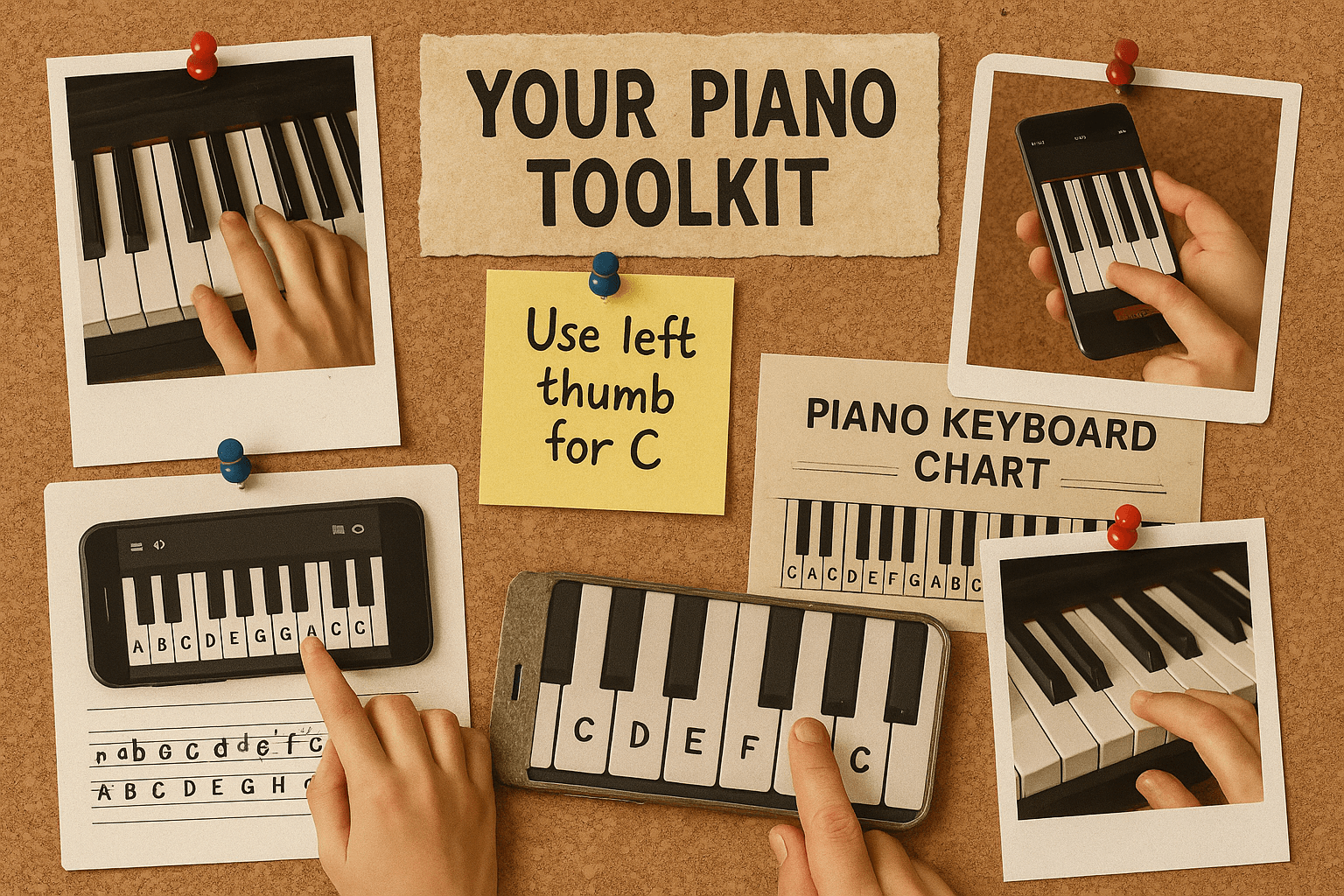 Let’s be honest—learning to play the piano isn’t just about sitting in front of the keys and pressing notes. It’s about understanding what you’re doing, practicing with purpose, and having the right tools to guide you along the way. That’s where interactive support systems and digital resources can truly transform your learning experience.
Let’s be honest—learning to play the piano isn’t just about sitting in front of the keys and pressing notes. It’s about understanding what you’re doing, practicing with purpose, and having the right tools to guide you along the way. That’s where interactive support systems and digital resources can truly transform your learning experience.
Whether you're taking in-person classes or enrolled in an online piano course, these tools can speed up your progress, reduce frustration, and make learning piano both effective and enjoyable.
Here are some essential piano learning tools that can make a huge difference when you're just starting out:
If you’re still finding your way around the keyboard, this chart is your best friend. It helps you:
Keep one beside your piano or as a desktop background while using virtual keyboards.
These are physical or digital overlays that mark each key with its note name. Especially helpful for beginners, they assist in:
Not everyone has access to a full piano. Virtual pianos allow you to:
These tools are also great when traveling or between practice sessions.
Apps that track your progress and guide daily routines are perfect for keeping you motivated. Look for features like:
Using interactive aids builds a stronger foundation because they:
For instance, trying to play music notes on piano keys without any support can feel overwhelming. But when you have the right chart or visual labels, that pressure turns into curiosity and confidence.
At Art Gharana, every online piano lesson includes access to essential learning tools like printable keyboard charts, interactive assignments, and expert-led video modules. And if you’re not sure where to start, why not book a free trial class and explore it firsthand?
You don't have to learn alone—especially when technology and expert support can make your journey smoother and more successful.
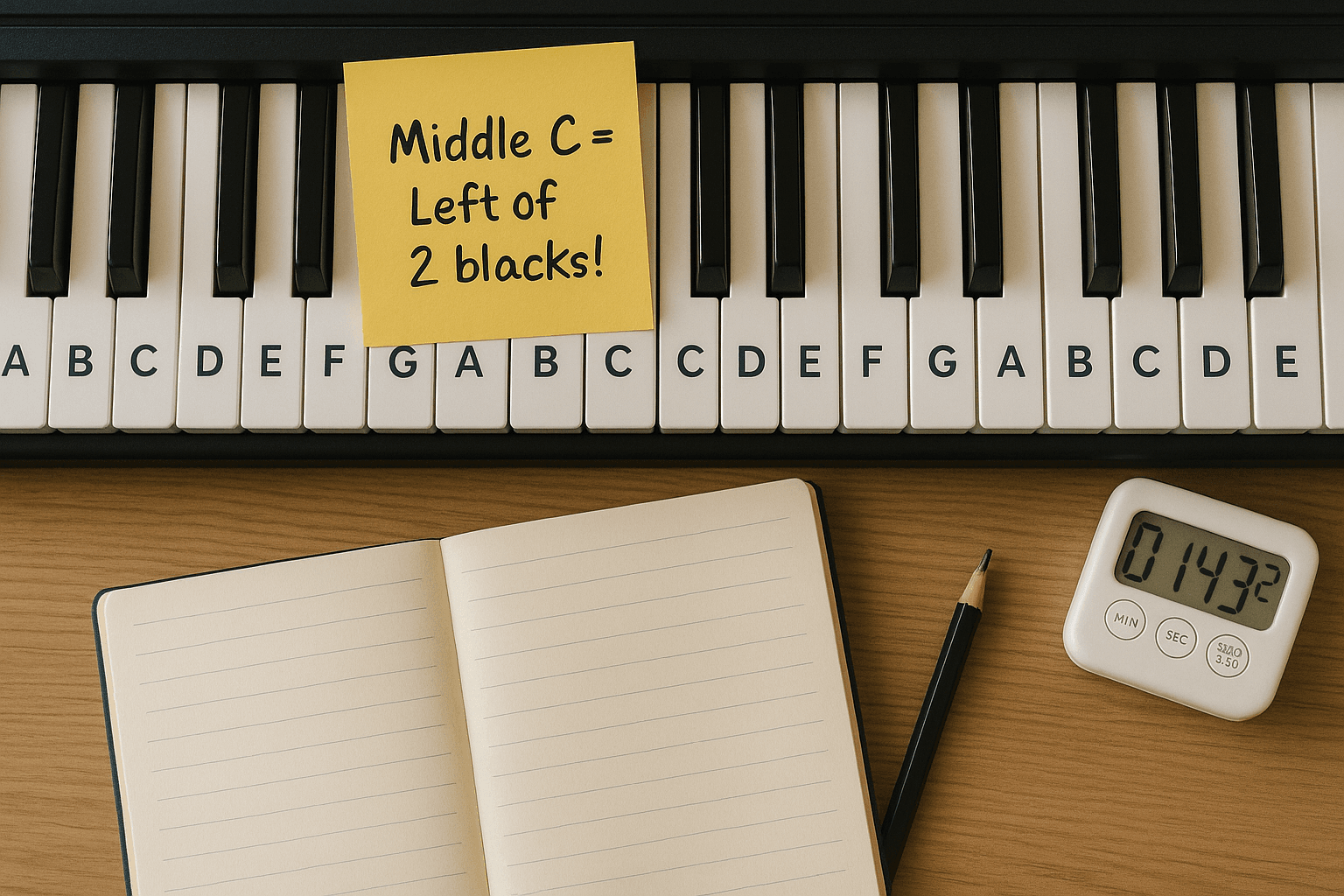 So, you’ve looked at the piano and thought, “How does anyone remember all these keys?” Don’t worry—you’re not alone. The layout of piano keys might seem complex at first glance, but once you understand the logic behind it, it becomes second nature. The trick lies in using the right learning techniques and reinforcing them with consistent practice.
So, you’ve looked at the piano and thought, “How does anyone remember all these keys?” Don’t worry—you’re not alone. The layout of piano keys might seem complex at first glance, but once you understand the logic behind it, it becomes second nature. The trick lies in using the right learning techniques and reinforcing them with consistent practice.
Every 88-key piano (or even a smaller keyboard) repeats the same set of 12 notes across its range. That’s the heart of the piano keyboard layout. These 12 notes include:
These repeat in patterns called octaves, and recognizing this repetition is the first step to mastering the instrument.
Want to quickly find where you are on the keyboard? Use these practical tips:
When practicing, don't just press keys. Pay attention to:
Doing this turns passive playing into purposeful learning—the kind that builds real confidence.
In the early stages, there’s nothing wrong with labeling your keys. In fact, many beginners use labeled piano keys or stickers to remember names until they become second nature. Gradually, your muscle memory will take over.
Looking for a reliable way to start this learning journey? The Online Piano Course at Art Gharana combines visual aids, one-on-one teacher support, and structured modules to help you master the piano layout with ease. And yes, you can book a free trial class to experience it firsthand.
Understanding the names of piano keys, their placement, and how they repeat is more than just beginner knowledge—it's the base upon which your entire musical ability is built. Get it right, and you'll unlock your creative potential faster than you think.
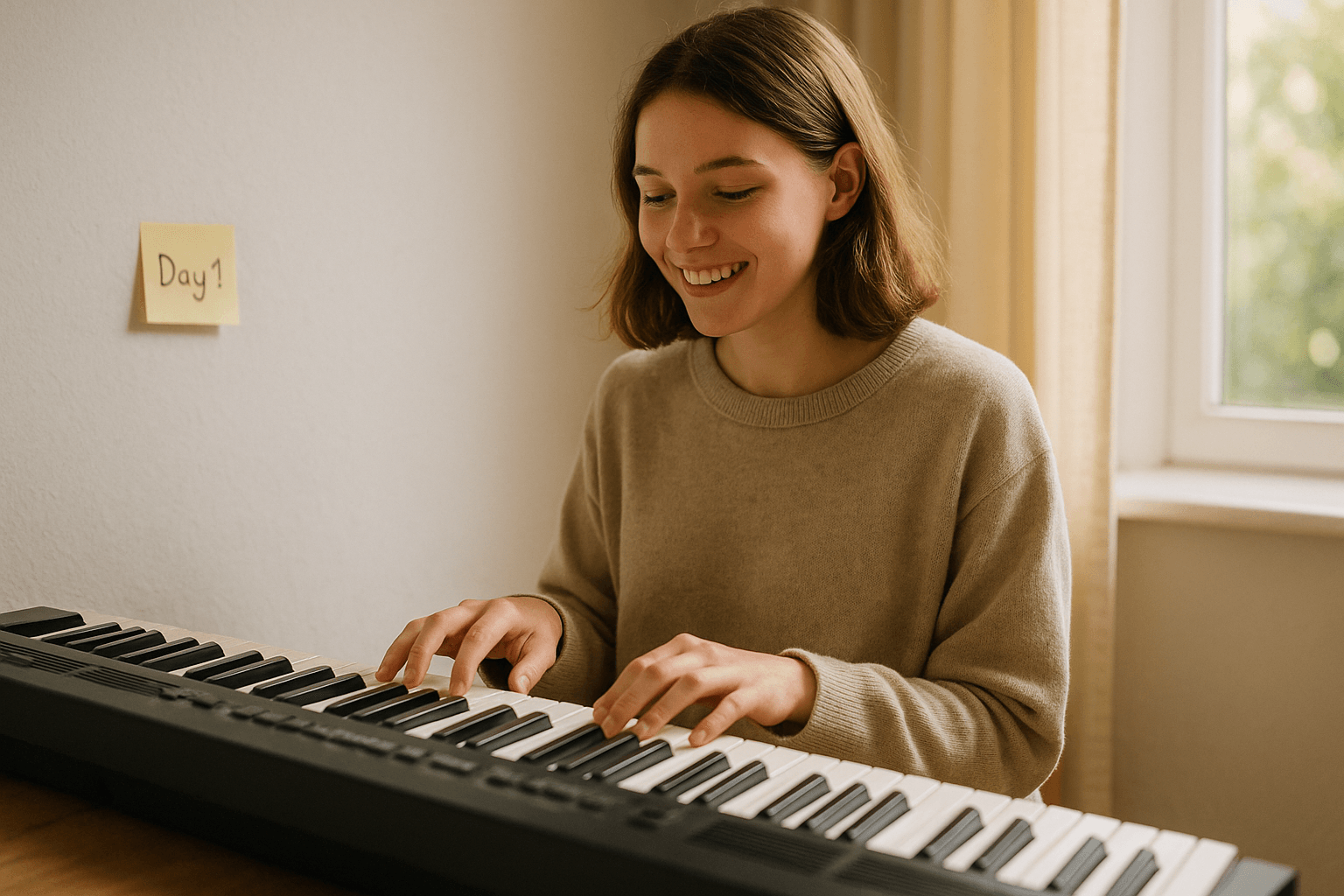 If you’ve made it this far, chances are you’re not just curious—you’re genuinely ready to learn the piano and bring music into your life. And why shouldn’t you? Whether you’re dreaming of playing your favorite songs, building a creative outlet, or even just wanting a productive way to unwind, piano lessons offer all that—and more.
If you’ve made it this far, chances are you’re not just curious—you’re genuinely ready to learn the piano and bring music into your life. And why shouldn’t you? Whether you’re dreaming of playing your favorite songs, building a creative outlet, or even just wanting a productive way to unwind, piano lessons offer all that—and more.
The beauty of learning music online today is the unmatched convenience and access to top-quality guidance without ever leaving your home. You no longer need to wait for the “perfect time.” The tools are in your hands—literally. With structured lessons, expert instructors, and a supportive community, everything you need to succeed is just a click away.
Still wondering how to begin?
Start by choosing a platform that not only teaches you the basics of piano but also nurtures your growth as a musician. That’s where Art Gharana stands out. Our online piano course is thoughtfully designed for beginners and aspiring musicians alike, blending theory, practice, and creativity in a way that actually sticks.
And if you’re still on the fence, take that first step without any pressure—book a free trial class. You’ve got nothing to lose and a whole new skill to gain.
Because the question isn’t “Can I learn piano at home?” It’s “Why haven’t I started yet?”